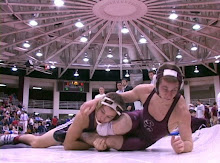"One More River to Cross"Recognizing the Real Injury in Brown:
A Prerequisite to Shaping New Remedies
By: Charles Lawrence
In this piece, Charles Lawrence does not necessarily argue a point as much as he states facts as to how the Brown vs. the Board of Education court case influenced our nation.
1.) "In short, segregation American-style, like South African apartheid, has only one purpose: to create and maintain a permanent lower class or subcaste defined as race."
So, our early Americans just wanted to feel like they were above somebody. Whether it was because of all the years of tyranny that our forefathers endured back in Europe, or the just the plain fear of an uproar I don't know but what kind of logic is this. Just think how it would feel to be treated barely one step above an animal.
2.) "The small cadre of lawyers who formulated and implemented the BTCYWIl strategy were well aware that the desegregation of schools would not be a panacea. Their ultimate goal was full political and civil equality for Blacks; they knew that this could not be achieved until the entire system of segregation had been destroyed."
This court case did not completely solve the problem of segregation, but it did shock the world and have alot of influence on the overall outcome of segregation. I think that this is what we should do with major problems today. I think that just because we will not get immediate results, that we are afraid to tackle these issues.
3.) "In Washington v. Davis, the fact that blacks did less well on a standardized test was a direct result of the fact that Washington, D.C., and environs had maintained a school system segregated by law until 1954 (Bolling v. Sharp)" and had perpetuated that segregated system by using an only slightly more sophisticated system of classroom segregation through tracking until 1967 (Hobson v. Hansen)."
This does not show that black kids were dumber than white kids, but it did show that our government spent less attention to the school system provided for blacks. If you want equal results, you haveto teach equally.
This was a little hard to read at the because of all the law jargon, but I acquired a basic gist from the meaning of sentences. I have also learned about the Brown vs. The Board of Education case before, so I knew somewhat to expect. This relates to other racial topics that we have talked about in class before, but this is more about the history. This is where it all started. If folks had not made concious decisions to make statements we would not be as comfortable with race as we are today. Granted we are not perfect now, but we have come a very long way.
Again, I think that if we are going to tackle issues like global warming and world hunger, we are going to haveto make a statement. It has worked for what seemed to be an issue that would never be solved, why can it not work for these issues. Just a thought to bring this issue into our world today.
